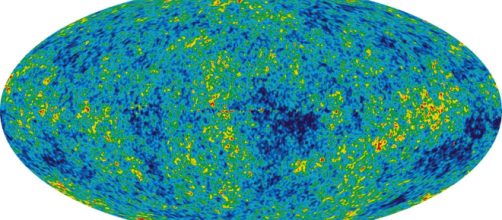On Sunday, December 3, at NASA's Silicon Valley Research Center in Palo Alto, a number of scientists received the lucrative prize of $3 million for major breakthroughs in several fields of research. This kind of Oscars for scientists, founded by Mark Zuckerberg and Sergey Brin in 2012, especially distinguish researchers based on their work on greatest mysteries of the universe in fundamental physics. According to NASA, this year the first prize was awarded to the team behind the project called Wilkinson Microwave Anisotropy Probe or WMAP.
The WMAP is an American Space Observatory sent into the orbit around the Earth in 2001.
Until 2010, this beautiful baby of about 900 kilos had installed its metal carcass in the orbit around the Earth on what is called the point L2 of Lagrange, which means it followed our planet away from the sun, on the darkest point of the Earth.
The 'baby picture' of the cosmic microwave background
Simplifying, we can say that the job of WMAP was to measure the minute changes in temperature and morphology of the universe. It is by carrying out these measurements, by collecting this data, in 2003 the space observatory devised an image which we all know. But what does this photograph mean? These blue, yellow and red dots? what is hidden in the baby picture?
Scientists win prize for 'baby picture' of the entire universe soon after it formed https://t.co/hHCQpRDzlI pic.twitter.com/6puYDADNGS
— The New Science (@NewScienceWrld) December 4, 2017
As we know, since the 1960s the Big Bang is considered the most satisfactory cosmological model to explain the creation of the universe.
This "Big Bang" is the oldest spatiotemporal frontier we knew. The image we see above represents the distribution of matter in the universe from about 380,000 years after the Big Bang, almost a snap in the scale of the history of time. We can also say that this large oval filled with dots of color accurately represents the intensity of the background of cosmic radiation in each direction of the sky. This is called the cosmic diffuse fund, that is the ultimate spatiotemporal limit of our knowledge of the universe.
First to exhibit the dark energy
This image of NASA very clearly represents its evolution for the common man.The WMAP has thus succeeded in mapping the origin of the universe as never before.
The colors of the points within the image represent tiny variations in temperature and intensity (intensity of darkness indicates the coldness) and allow scientists to obtain information about the content of the past universe as well as the current one. In particular, the space observatory was the first to demonstrate the existence of dark energy, which would be the cause of the perpetual expansion of the universe. Dark energy would make up 70% of the universe, while dark matter would make up 25%.


